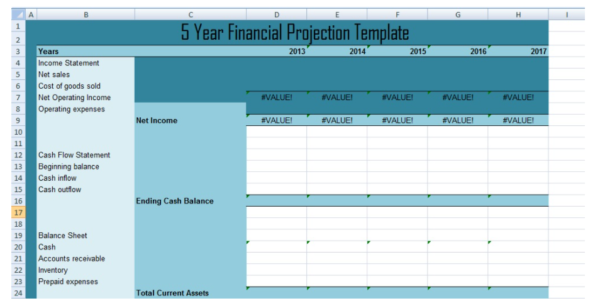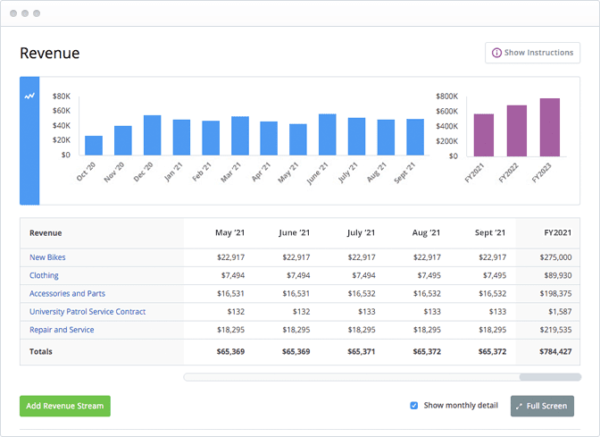
Pilates became a popular way for people to exercise at home during 2020’s pandemic-related closures with minimal space and equipment requirements. In a recent survey, 72% of respondents indicated taking up the practice during the shutdown. Since Pilates helps increase core strength, improve flexibility, and enhance overall health, it is no surprise that it has grown by about 2.6% per year in the past five years.
If you’re ready to help people strengthen and tone, a Pilates studio business plan is your first step.
Ready to find more customers and get expert fitness marketing advice, all in one place?
Why you need a Pilates studio business plan
When you’re passionate about fitness, it can be tempting to jump into your new business right away. But making a business plan gives you a chance to do some background research before investing your time and money into a studio.
Creating a Pilates studio business plan gives you a better chance at successfully launching. You will have a better sense of the market for classes in your area, a realistic expectation of your operating costs, and a preliminary marketing plan to attract customers. If you need help funding your endeavor, a solid business plan will help you make your case with investors.
You don’t need a business degree to create a plan, but you do need to follow a few guidelines.
6 do’s and don’ts for making a Pilates studio business plan
Do some market research
Customers are the most important part of any business. You can be the most experienced, enthusiastic instructor in your area, but without customers, your business will close. Before opening your studio, evaluate your market. Consider the following:
- Who is your target customer?
- What are the demographics in your area?
- Are there other yoga and Pilates studios nearby?
- Does the local recreation center offer Pilates classes?
Answering these and other questions will give you a sense of how your business fits into the market. For example, if your area has a high percentage of young people with families, you can build your schedule around work and school schedules. If your area is home to a higher percentage of empty nesters, promote Pilates as a low-impact way to stay in shape and socialize with people in the neighborhood.
Don’t ignore competitors
Most businesses have competition, even if it’s not obvious. If you’re planning on opening a Pilates studio, you could still lose customers to live streaming and on-demand classes. Online fitness subscriptions have grown by 16.8% from 2020 to 2021.
Knowing potential competition will help you differentiate your business. A high level of competition makes you focus on how your studio is unique. You will need to stand out to attract customers. Consider researching new trends in Pilates or offering some fusion Pilates/dance or Pilates/High-Intensity Interval Training (HIIT) classes, for example.
Do be realistic about your expenses
Even if you only plan on offering a few classes to save money on hiring instructors, you will have to pay to operate your studio. Figure out what size you need your space to be and look up commercial rent rates in your area.
Before you open, you will need to buy mats, resistance bands, and other equipment for classes. You will also need to pay for utilities, including light, heating, and cooling. If you decide to offer free Wi-Fi to customers, you might need more robust internet service.
Along with the costs of physically operating your business, consider how much it will cost to host your website and market your business. Then add in salaries for any other instructors you plan on hiring.
Overlooking and underestimating expenses is easy to do, and it can throw a wrench into your success. Having a reasonable idea of how much you will need to operate your studio in the first five years helps you prepare for potential slow periods, and you can use the figures to create your marketing goals.

Don’t overestimate your revenues
Everyone wants to be optimistic when they open a new business, but it can take time to attract new customers. It’s also common to have lulls in business. Setting class prices is a challenge. You have to consider your expenses and the competition in your area.
Price-wise, you probably can’t compete with the local recreation center charging $7 for a resident drop-in. But you can compete with a large corporate chain charging $120 a month for memberships. Set your pricing based on your brand and its benefits to the client.
Be conservative about your estimated level of class participation. Preparing for the worst-case scenario will help you save up a cash cushion for slow periods. Even if your studio takes off and becomes a hit, being aware of potential slowdowns puts you in a better position to weather them.
If you’re not comfortable projecting revenues, look for a template like the one offered by LivePlan. Your local Small Business Administration office may also have resources you can use to make revenue projections.

Do have a solid Pilates studio marketing plan
To attract new customers, you will need a marketing plan. Researching upfront will give you a better idea of your potential client base so you can create Pilates promotions and campaigns that speak to them. Before opening your studio, create a set of digital and offline marketing campaigns you can use to sell your studio.
Figure out what makes you unique and highlight it in your marketing strategy. Once you move beyond your business plan, you can use your distinctive value to create a tagline, build your website, establish yourself on social media, and more.
The first part of your Pilates studio business plan will be your executive summary. This section should indicate your unique value proposition, which will be heavily incorporated into your marketing plan later in the document.
Don’t sell yourself short
Your plan will also include a section about you and other employees if there are any. This is your chance to shine. Sell your skills and your passions, and make people excited to invest in you.
Don’t lie or overstate your qualifications. Instead, focus on what makes you and your team perfect for delivering Pilates classes to clients in your target market.
Your first steps toward creating a Pilates business plan
Before writing your business plan, start with market research. Look through census reports, city data, and other sources to see what kinds of people live in your area. Come up with a business model. You could decide to offer livestreams of some classes to attract a larger target market.
Next, identify your unique value. Determine what makes you the best person to provide Pilates instruction. You will build your branding and marketing on this value. It lets you differentiate yourself from other studios in the area and helps you make your case to new customers who might benefit from your classes.
When you see a market in your area for a new Pilates studio, and you have a clear vision of how you can help, you have the foundation for a solid business plan.




